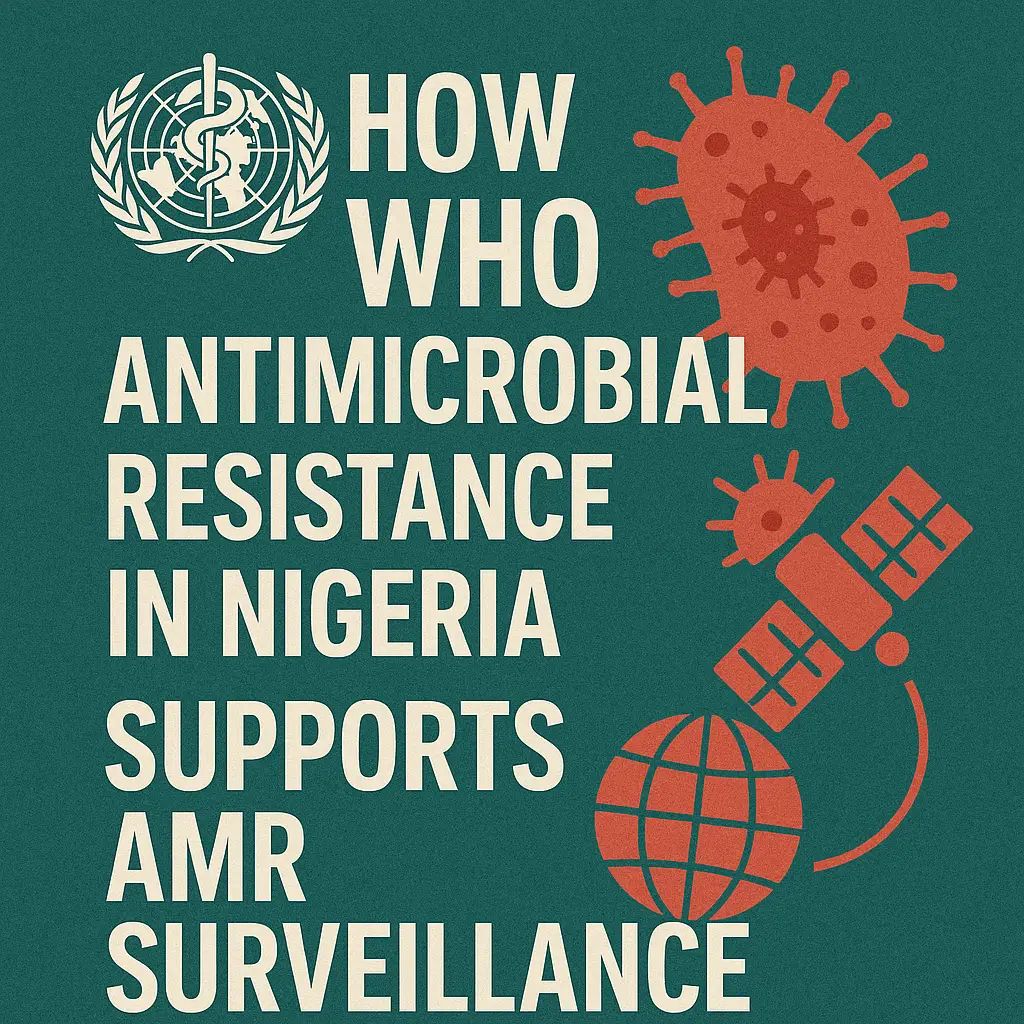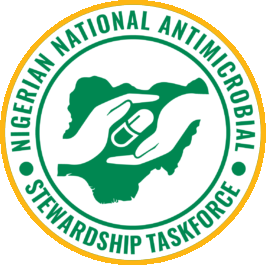
Antimicrobial Resistance (AMR) is one of the most pressing public health threats globally. In Nigeria, the World Health Organization (WHO) plays a central role in monitoring, managing, and mitigating this silent crisis. From rural clinics to major hospitals in Lagos and Abuja, the WHO AMR Nigeria initiative is shaping the future of infectious disease control and health system resilience.
This article outlines how WHO antimicrobial resistance Nigeria efforts are helping strengthen AMR surveillance, improve public awareness, and enforce health regulations that aim to reduce drug resistance in Nigerian clinics.How WHO Antimicrobial Resistance in Nigeria Supports AMR Surveillance
What is WHO AMR Surveillance in Nigeria?
WHO AMR surveillance Nigeria is part of the Global Antimicrobial Resistance Surveillance System (GLASS). Nigeria joined GLASS in 2017, signaling a commitment to tracking antibiotic-resistant infections across hospitals and laboratories.
The WHO AMR report Nigeria has documented increasing resistance to key antibiotics, especially for tuberculosis, malaria, gonorrhea, and hospital-acquired infections. To monitor these trends, the WHO supports data gathering from sentinel sites, including the National Reference Laboratory, located in Abuja.
These surveillance efforts are tied to the Nigeria national AMR action plan, which outlines how to collect and use Nigeria antimicrobial resistance data for policy-making and treatment decisions.
When Did WHO Begin AMR Work in Nigeria?
The WHO’s structured efforts to combat antimicrobial resistance in Nigerian hospitals began intensifying around 2015, following the endorsement of the Global Action Plan on AMR. By 2017, WHO helped Nigeria launch its first AMR surveillance network, incorporating human health, animal health, and environmental sectors a One Health approach.
Through various WHO AMR training Nigeria programs, health professionals, laboratory workers, and pharmacists were educated on best practices. This investment significantly improved WHO AMR data systems Nigeria, enabling nationwide digital reporting.
Where Is AMR Surveillance Happening in Nigeria?
The WHO supports AMR monitoring across urban and rural settings. Major sentinel sites are located in:
· Lagos (teaching hospitals and research institutes)
· Abuja (National AMR Coordination Centre)
· Kano, Enugu, Sokoto, and Port Harcourt
Surveillance also extends to veterinary labs, tracking WHO AMR livestock Nigeria resistance patterns. In rural Nigeria, where access to qualified healthcare is limited, WHO promotes mobile health AMR WHO Nigeria solutions to monitor antimicrobial resistance environment Nigeria indicators like water contamination or animal waste.
Which Bacteria and Infections Are Monitored?
The WHO focuses surveillance on bacteria that cause high-morbidity infections such as:
· Mycobacterium tuberculosis (MDR TB Nigeria WHO)
· Plasmodium falciparum (WHO malaria resistance Nigeria)
· Neisseria gonorrhoeae (WHO gonorrhea resistance Nigeria)
· Klebsiella pneumoniae and E. coli (major culprits in hospital-acquired infections AMR Nigeria)
High-risk groups such as children, pregnant women, and the elderly are monitored closely for resistance levels. Pediatric AMR rates are climbing, and WHO AMR neonatal infection Nigeria data is critical to guide treatments in neonatal wards.
Who Leads the AMR Response in Nigeria?
The Nigerian Ministry of Health AMR division coordinates efforts with WHO, CDC, and development partners. The WHO AMR national response Nigeria includes technical guidance, diagnostics training, and access to WHO-approved antibiotics.
Collaborations with Nigerian universities, such as the University of Ibadan and Ahmadu Bello University, allow for WHO AMR research in Nigeria, training future microbiologists and data scientists in surveillance methodology.
Key partners also include:
· NCDC (National Centre for Disease Control)
· Federal Ministry of Agriculture
· NAPRID (National Agency for Pharmaceutical Research and Development)
Whose Responsibility Is AMR Surveillance?
While WHO provides leadership and funding, the burden of sustaining AMR surveillance lies with both government and healthcare providers. Nigerian labs are expected to report to GLASS, but under-reporting remains a challenge. WHO antibiotics regulation Nigeria projects are working to build compliance through WHO AMR capacity building Nigeria initiatives.
Pharmaceutical companies and drug dispensaries are also being monitored under WHO and Nigerian pharmacies programs to curb WHO antibiotic misuse Nigeria and restrict over-the-counter sales of prescription antibiotics.
Why Is AMR Surveillance Important in Nigeria?
Nigeria faces a high burden of infectious diseases. Without adequate surveillance, antibiotic-resistant bacteria Nigeria may go unchecked, leading to treatment failures and increased mortality.
The WHO AMR in infectious diseases Nigeria project helps the country:
· Detect superbugs Nigeria WHO before outbreaks spread
· Guide rational antibiotic use
· Reduce medical costs
· Improve hospital infection control
· Develop new health policies based on antimicrobial resistance stats Nigeria
The WHO also links Nigeria’s data to global databases, boosting the Nigeria contribution to global AMR efforts and enabling evidence-based international support.
How Does WHO Strengthen Surveillance in Nigeria?
Data Collection & Reporting
Through the Nigeria GLASS AMR surveillance WHO system, labs feed real-time data into WHO dashboards. Advanced tools, including AI in AMR monitoring Nigeria WHO, help predict trends and detect emerging resistance patterns.
Health Education & Campaigns
To address misuse, WHO runs public health campaigns AMR Nigeria, including Antibiotic Awareness Week events across states. Schools, markets, and radio broadcasts are used to promote antibiotic resistance awareness Nigeria and behavior change.
Hospital Stewardship
The WHO stewardship Nigeria hospitals framework helps doctors prescribe responsibly. WHO AMR training Nigeria sessions improve diagnostics, limiting broad-spectrum antibiotic use.
Legislation and Policy
WHO supports the Nigeria health policy on AMR, pushing for the enforcement of prescription-only antibiotic laws and reduction of counterfeit drugs AMR Nigeria through pharmacy regulations.
Agriculture and Veterinary Oversight
To combat Nigeria AMR in agriculture, WHO collaborates with the Ministry of Agriculture. Veterinary AMR surveillance Nigeria programs regulate antibiotic use in poultry and livestock, ensuring safe food chains.
Nigeria AMR vs Global Stats
Compared to other African nations, WHO AMR Africa vs Nigeria analysis shows that Nigeria reports higher resistance in common infections due to:
· Overuse of antibiotics in Nigeria
· Unregulated pharmaceutical sales
· Limited diagnostics access in rural areas
Globally, Nigeria contributes significantly to the understanding of multidrug resistance (WHO multidrug resistance Nigeria) in high-burden infections like MDR TB and resistant malaria.
WHO and Nigeria: The Way Forward
The path ahead includes:
· Expanding WHO AMR pilot projects Nigeria
· Scaling digital surveillance AMR Nigeria
· Encouraging community outreach AMR WHO Nigeria
· Enhancing donor support AMR Nigeria for rural facilities
· Promoting WHO AMR behavior change campaigns Nigeria to shift public mindset
With sustained international collaboration and domestic accountability, WHO and Nigeria health partnership efforts will continue to make strides in preventing an AMR crisis in Africa’s most populous country.
Conclusion
The WHO antimicrobial resistance Nigeria program is an essential pillar in the global fight against AMR. Through comprehensive surveillance, data-driven policies, and capacity-building initiatives, the WHO AMR Nigeria initiative is helping transform the way Nigeria understands and responds to antibiotic resistance. With strong leadership and sustained collaboration, the country is better equipped to protect its people — and contribute meaningfully to global health.
FAQs
What is the national surveillance system for antimicrobial resistance?
Nigeria’s national surveillance system for AMR is part of WHO’s GLASS platform. It involves lab-based reporting from sentinel hospitals and regional centers.
How does antimicrobial resistance undergo surveillance and how can surveillance help reduce antimicrobial resistance?
Surveillance tracks resistance patterns in bacteria via lab tests. This data informs treatment guidelines, regulates antibiotic use, and shapes public health responses to limit resistance spread.
WHO initiatives for AMR?
WHO’s initiatives include GLASS, AMR National Action Plans, hospital stewardship programs, public awareness campaigns, veterinary monitoring, and digital data tools.
How does the WHO suggest tackling antibiotic resistance?
WHO recommends surveillance, policy enforcement, public education, better diagnostics, pharmaceutical regulation, and promoting responsible prescribing.
How are scientists trying to tackle the problem of antibiotic resistance?
Scientists develop new antibiotics, conduct AMR genomic studies, use AI for trend prediction, and research behavior change models to promote responsible use.
What are two strategies to help combat antibiotic resistance in our society?
a) Educating the public and healthcare professionals on responsible antibiotic use.
b) Enforcing strict regulations on antibiotic sales and usage in both human and veterinary medicine.


